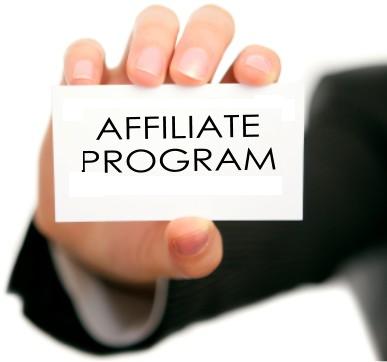Reading Time: 4 minutes
For the uninitiated ~ affiliate marketing is a business model where two or more parties share the revenues. The one selling the product is the merchant and the other party (who is assisting by generating leads and sales on the merchants behalf) is known as ‘the affiliate marketer’. An affiliate marketer can work with several merchants at the same time and can make good money depending on the niche and popularity. There are in fact numerous ways through which an affiliate marketer may make their money. Several of these methods can also combine within a multi-tier and integrated strategy.
Starting your Affiliate Marketing
Starting your own affiliate marketing is easy -you don’t even need any HTML skills! However, before you start you will have to gain some knowledge on the latest in make money affiliate marketing schemes and strategies. Affiliate marketing is a very inventive process. New methods are seldom shared and are only spoken about within tight circles of webmasters. If you’re curious about the concept, then you need to obviously begin somewhere – and I’d suggest beginning in a field that you enjoy. Use this as testing grounds to gain knowledge in the affiliate arena. Research what’s trending en-mass, find out what audiences like – ask yourself: ‘which companies are popular and what kind of products are trending like hot cakes?’ This can really help you build the foundations and thinking you need to earn good profits as an affiliate. Begin researching on the internet, break into circles and make as many friends and contacts as you can. Learn how to develop strategies that are effective and manageable over a sustained period of time, and learn ways in spotting tight and ripe niche breakouts that are more opportunist endeavours.
Types of Affiliate Marketing
There are different types of affiliate marketing like Pay-Per-Click (PPC), Pay-Per-Sale (PPS), Pay-Per-Lead (PPL), Single-tier, Two-tier and Multi-Tier, Residual income and so on. Amongst these, Pay-Per-Click (PPC), Pay-Per-Sale (PPS), Pay-Per-Lead (PPL) are the most popular.
Pay Per Click Advertising: Pay-Per-Click is one of the most popular kinds of affiliate marketing among the all types and it works best for those affiliates who have small websites. In this type of marketing, the merchant pays the affiliate only when a visitor gets referred to the merchant’s website and clicks on an ad there on the affiliate’s site. The advantageous thing about such affiliate programs is that the affiliate gets the payment even if the customer or rather the visitor doesn’t buy any items or service from the concerned merchant’s website. However, the commission paid for this task is smaller in comparison to other affiliate payments.
Pay Per Sale Advertising: On the other hand, pay per sale is one of the most lucrative affiliate marketing programs amongst the affiliates and also most popular amongst the merchants. Through pay per sale, the merchant pays the affiliate only when the referred visitor actually purchases something. The commissions paid in thus type are considerably higher than that in PPC, and can even go up to 75% when informational products are sold. It may sometimes be referred to as CPS, and is essentially an online advertising pricing system that rewards direct action rather than simple traffic relocation. As a result, it is more suited to retail consumers that are seeking to optimize sales conversions rather than simply increase the volume of traffic to their site or blog.
Pay Per Lead: Again, in pay per lead affiliate programs the affiliate gets paid by the merchant when the referral fills in an application form. So, you can opt for any of the affiliate programs if you want to make money, as it provides a bridge between PPC and PPS marketing strategies. Under this type of arrangement, payment can be made by the advertiser for any specified action that is completed online, which can include the completion of application or enquiry forms, purchases or the requisition of product samples. The finer details can be determined individually between the two parties, according to their own individual needs and demands. Direct response advertisers are known to consider PPL as the optimal way to purchase online advertising, as it offers the most reward to both parties involved.
Single Tier and Multi-Tier Affiliate Marketing: There are some advertisers who offer multi-tier affiliate marketing programs, which distribute commission into a hierarchical referral network. In terms of practicality, this means that a merchant will sign an agreement with an advertiser and earn commission based on an agreed activity or action. If this arrangement is beneficial for both parties, then secondary merchants join the program by referral and adhere to the same terms. Their activity also generates a pre-determined amount of commission for the merchant who referred them in the first instance, although this is usually discounted from the original rate.
In Summary: Why Affiliate Marketing is Still Big Business in 2013
According to Pricewaterhouse Coopers, UK businesses spent more than £800 million on affiliate marketing and similar practices during 2012, with a view to both improving website traffic and optimising sales conversion rates. It is favoured among businesses because they are able to pay for a defined action, rather than simply investing in the placement of an advert.
According to Pricewaterhouse Coopers, an estimated total of £9 billion in sales was generated through these online performance marketing (OPM) techniques. In relation to the amount invested, this represents a return of more than 100% and offers a clear insight into why such methods continue to be incorporated as part of a wider marketing strategy.
This post was written by Matthew Slee (aka the Director) with assistance from other voices associated with those circles that want you to make money in affiliate marketing.

Leave a Reply